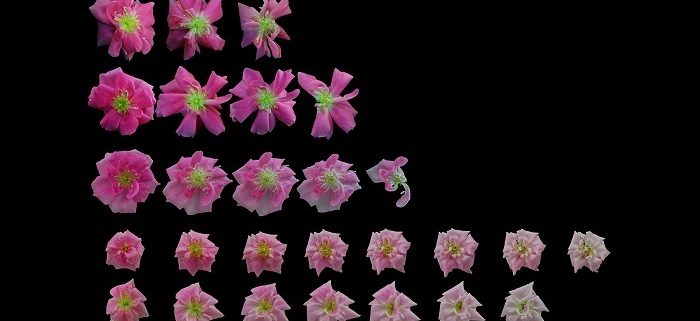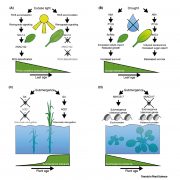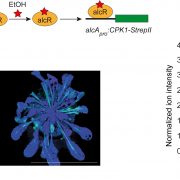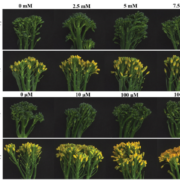Reactive oxygen species homeostasis in rose petals
Background: Reactive oxygen species (ROS) are by-products of several primary metabolic pathways and high levels of ROS accelerate cell death and organ senescence. ROS also serve as signaling molecules and are required for cell functions. Therefore, cellular ROS homeostasis must be tightly controlled to protect cells from dysfunction and death. In photosynthetic organs like leaves, ROS are mainly generated in the chloroplasts through photosynthetic electron transfer and are tightly governed by the circadian clock. The main sources of ROS generation in flower petals, a typical non-photosynthetic organ, are most likely the mitochondria, mainly through electron transfer from components of the respiratory chain.
Question: How is ROS homeostasis is controlled in flower petals?
Finding: We showed that the H2O2 level exhibits a typical circadian rhythmicity in rose petals, which is opposite to that observed in leaves but is consistent with the respiratory rate of petals. The RhPIF8–RhBBX28 transcription factor module has a great impact on expression of a wide range of genes related to respiratory metabolism, including the tricarboxylic acid (TCA) cycle, glycolysis, pyruvate metabolism, as well as ascorbate and aldarate metabolism. Particularly, RhBBX28 directly controls expression of SUCCINATE DEHYDROGENASE 1, which encodes a highly conserved subunit of Mitochondrial Complex II and the electron transport chain and has a central role in mitochondrial ROS homeostasis. In summary, we argue that the RhPIF8–RhBBX28 module represents a surveillance component to constrain SUCCINATE DEHYDROGENASE 1 expression, and thus the strength of the TCA cycle, at a proper level to avoid excessive mitochondrial ROS production in petals.
Next steps: In leaves, CCA1 protein, the core component of the circadian clock, regulates ROS homeostasis and oxidative stress responses. It will be interesting to investigate whether BBX protein-dependent regulation of respiration-associated ROS homeostasis exists in leaves as well or whether it independently evolved in petals.
Yi Zhang, Zhicheng Wu, Ming Feng, Jiwei Chen, Meizhu Qin, Wenran Wang, Ying Bao, Qian Xu, Ying Ye, Chao Ma (2021) The circadian-controlled PIF8-BBX28 module regulates petal senescence in rose flowers by governing mitochondrial ROS homeostasis at night. The Plant Cell, https://doi.org/10.1093/plcell/koab152










